PPE in short supply for farm work during the COVID-19 crisis
Gloves, N95 respirators, coveralls and other gear that workers wear to protect themselves from COVID-19, pesticides, dust and other health hazards are in short supply as priority is given to health care workers during the pandemic.
To reduce the spread of COVID-19, workers may wear homemade face coverings, but for applying pesticides, they must wear respirators specified on the pesticide product label, said Whitney Brim-DeForest, UC Cooperative Extension rice advisor.
Pesticide applicators may use gear that is more protective than required by the product label and regulations.
“Although this could change in the days ahead, half-mask and full-mask respirators are more available than disposable N95 respirators for now,” said Lisa Blecker, coordinator for the UC Pesticide Safety Education Program.
Before the pandemic, 10% of N95 respirators from 3M went to health care, but that number is now 90%, the company said in a letter to distributors. This has led to significant backorders of PPE supplies for distributors.
Carl Atwell, president of Gempler's, an online distributor of worker supplies, said that before the crisis, normal lead times for PPE was up to 10 days. He estimated disposable respirators will become available in the fall and other PPE supplies in August.
In the meantime, there is alternative PPE that agricultural professionals can use during the shortage.
Atwell suggests looking for lesser known brands of PPE as opposed to the first tier of choice: “It's sort of like searching for Purell hand sanitizer. Purell brand might be out of stock, but can you find a different disinfectant?”
On Gempler's website, the more recognizable Tyvek coverall from Dupont is sold out, however disposable protective clothing is available from other brands. Reusable chemical-resistant clothing is also available as opposed to their disposable counterparts. Supplies in high demand are reusable and disposable nitrile gloves, protective clothing, disposable respirators and certain protective eyewear, such as goggles and face shields.
For workers who will be applying pesticides, Blecker and Brim-DeForest offered some guidelines on how to meet PPE requirements as the shortage continues.
General PPE requirements: “Remember, the label is the law,” said Brim-DeForest. “PPE requirements for agriculture are not being loosened.” The UCCE advisor recommends purchasing only what you need for the season and choosing reusable PPE whenever possible. Growers who have excess supplies of PPE can coordinate with their county agricultural commissioner or UCCE advisor to help other producers in their area.
Respirators: If you can't find the respirator required on the label, Blecker said, “Use an alternative, more-protective respirator. For example, if an N95 is required, you can use a half-mask with N95 particulate filters; these can be stand-alone filters or ones that attach to an organic vapor cartridge. You could also use a different pesticide that doesn't require a respirator. Consult with your PCA (pest control adviser) for options.”
Gloves: Chemical-resistant gloves, usually 14 mil or more in thickness are required for most California pesticide applications and should be worn by mixers, handlers and applicators. If nitrile gloves are not available, viton and laminate gloves are universal chemical-resistant materials for most pesticide labels. If the glove material is specified on the label, that instruction must be followed.
“Disposable gloves less than 14 mil can be worn, but not for more than 15 minutes at a time,” Blecker said. “Farmers should also note that thinner gloves cannot be layered on top of one another.”
Coveralls: Coveralls should be worn when required by the pesticide label or when the signal word is “WARNING” or “DANGER,” or when applying by backpack or airblast. “Coveralls can be made out of high-density polyethylene fibers (Tyvek and other brands), which are disposable, or cotton, which are reusable,” Brim-DeForest said. “If reusable coveralls are worn, the employer must ensure employees are provided clean coveralls.”
Goggles/face shields: Face shields are required for mixing and loading pesticides only if it's stated on the label. “If a face shield is unavailable, a full-face respirator can be used,” Blecker said. “Goggles or protective eyewear should always be worn in California when handling pesticides, regardless of what the label says. The face shield, goggles or safety glasses must provide front, side and brow protection and meet the American National Standards Institute Z87.1 standard for impact resistance.
The UC Integrated Pest Management Program also covers these topics in their pesticide safety webinar series at http://ipm.ucanr.edu/IPMPROJECT/workshops.html.
For more information about PPE, contact your county agricultural commissioner or see the California Department of Pesticide Regulation's posters at https://www.cdpr.ca.gov/docs/whs/pdf/gloves_for_pesticide_handling.pdf and https://www.cdpr.ca.gov/docs/whs/pdf/n95_alternatives_for_pesticide_handling.pdf.
Comments:
Thanks,
Lee

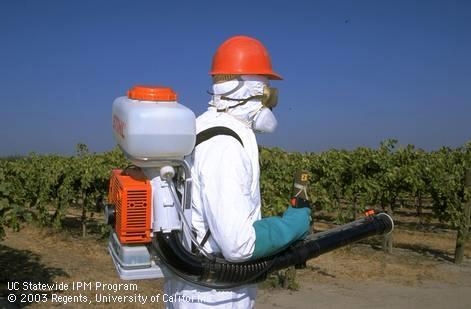
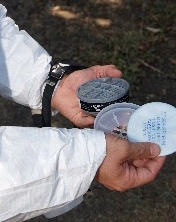
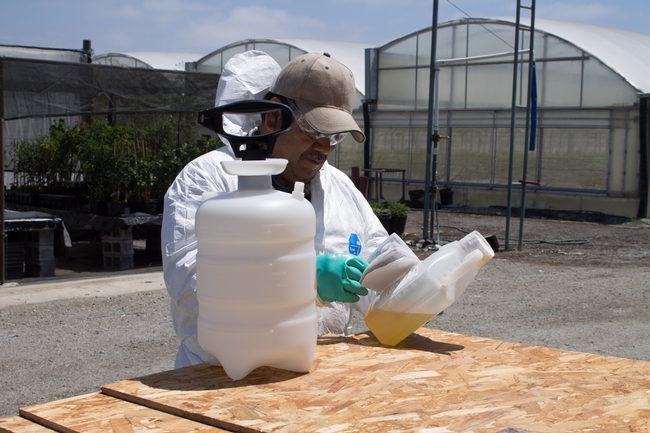
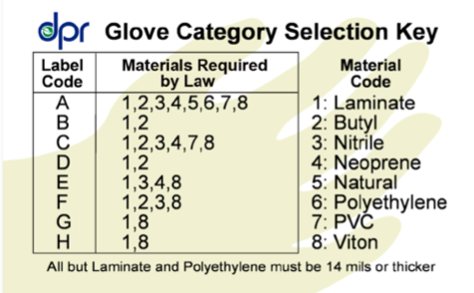
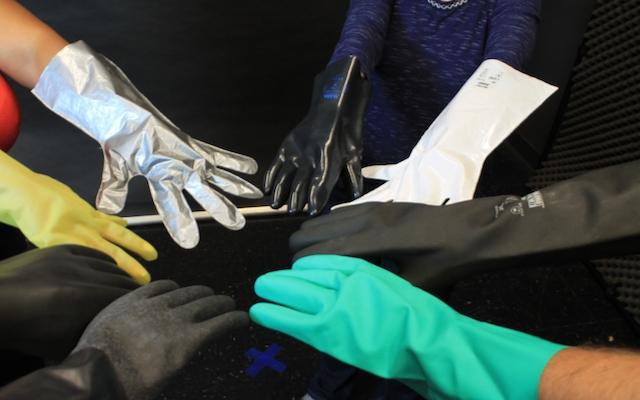
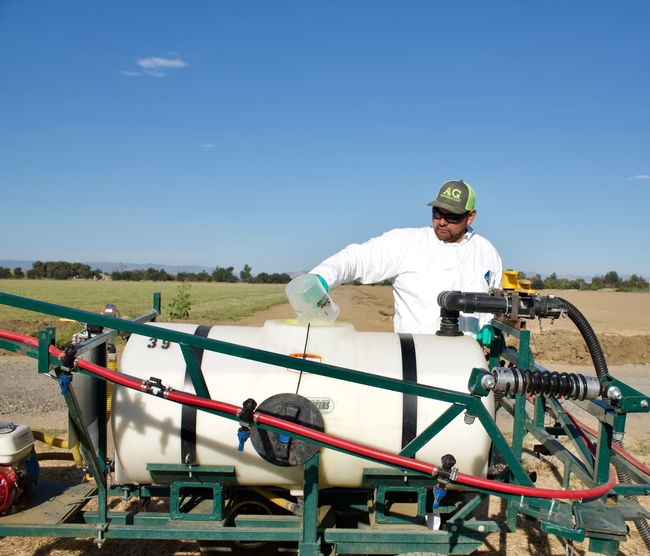
Posted by Nancy Wickus on April 23, 2020 at 2:42 PM